I’m Sorry, Dave. I’m Afraid I Can’t Do That.
Read a related piece from Dr. Ampel about electronics and aircrafts with a warning for the audio industry, here.
The conflict that often occurs between human sentience and machine intelligence is an ancient story oft told. It is also massively important for our industry as we now face ever more automation and AI based controllers in the systems we produce, install and design.
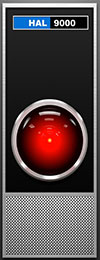 There is a long and fascinating parallel timeline between machine intelligence, automation, smart systems in audio and the development of those same ideas in the aircraft industry.
There is a long and fascinating parallel timeline between machine intelligence, automation, smart systems in audio and the development of those same ideas in the aircraft industry.
But to set the stage, let’s look a few memorable clashes between man and machine.
To do that, it’s time once again to break out the WAAAAAYYYYY-BACK machine and travel a half-century into the past. For anyone who has seen “2001: A Space Odyssey,” you know about the omnipresent HAL9000 (ship controller – in essence a super-charged autopilot), a supposedly ‘sentient’ or self-aware Heuristically programmed ALgorithmic computer, which in the film’s story “is considered infallible, any error one has ever made being human caused.” The fight for survival between the crew and HAL produced the famous quote, “I’m sorry, Dave. I’m afraid I can’t do that.” (To hear the infamous HAL speak that indelible phrase, voiced by Douglas Rain, click here.)
Then there was that famous original Start Trek episode, “The Changeling” from 1967 with the space Probe NOMAD.
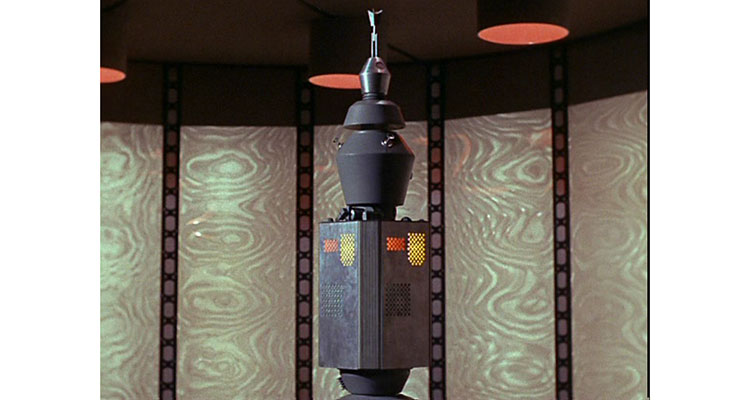
The Nomad idea was later recycled in “Star Trek: The Motion Picture,” when an earth-launched probe, Voyager 6, was captured by another sentient race and then returned as a massive entity, V’GER — Voyager 6 (now sentient, sort of).

Half-a-decade later, there was Skynet, another sentient machine gone amok — only this time it almost wiped out the entire human race (“The Terminator”). It kept trying though four more films — “Terminator 2: Judgment Day” (1991), “Terminator 3: Rise of the Machines” (2003), “Terminator Salvation” (2009) and “Terminator Genisys” (2015) — not to mention a short lived TV series and the probable Terminator 6 rumored to be in development.
Thankfully, there has not been an AI controlled audio system that has gone bonkers (yet!) and tried to kill people, but it always pays to recall the legendary quote from Don Davis, now the title of his latest book: “If Bad Sound Were Fatal, Audio Would be the Leading Cause of Death,” so the possibility remains that at some point bad code could prove fatal in audio, as it has in commercial aircraft.
The Parallel Timelines
1920s to 1930s
AIRCRAFT: Early 1930s Servo-electrically operated control surfaces were first tested in the 1930s on the Soviet Tupolev ANT-20. Long runs of mechanical and hydraulic connections were replaced with wires and electric servos.

AUDIO: In the late 1920s to early 1930s, the AGC (Automatic Gain Control) circuit was introduced for AM radios. Without AGC, an AM radio receiver would have had a linear relationship between the signal amplitude and the sound waveform amplitude (loudness). However, the strength of the signal received varied widely, depending on the power of and distance from the transmitter, and signal path attenuation (not to mention widely variable receiver electronics performance and stability and atmospheric conditions causing fade and signal loss) were not yet widely understood at that time.
The AGC circuit kept the receiver’s output level from fluctuating too much by detecting the overall strength of the signal and automatically adjusting the gain of the receiver to maintain the output level within an acceptable range. In essence, an AGC amounts to a throttle servo for loudness.

Late 1940s to 1950s
AIRCRAFT: In the late ’50s, a number of experimental and military aircraft were tested with various mixes of analog servo based control systems, replacing mechanical linkages and cables with electrically operated servo motors and valves.
AUDIO: As the development of analog tape recording technology advanced and the early experiments with video tape recording progressed, through the same time frame, advanced versions of both mechanical and electrical servo-control (for motors, video tape head-wheels and similar sub-systems) adapted from other industrial applications including aircraft systems, were introduced along with electro-optical AGC and early experimental solid state based gain control stages to maximize signal to noise ratios and improve fidelity and later B&W picture quality for video tape.
1960s to 1980s
AIRCRAFT: Jumping into the 1960s, the Concorde was designed from the outset (beginning in the mid-late 1960s) to be a fly-by-wire aircraft. It was felt that at speeds above Mach 1, it would be more efficient and faster to use electrically operated and servo-regulated early combination analog/digital control systems, which also provided significant weight savings over conventional cables, hydraulic piping and so forth. Certain critical sub-systems reportedly had fail-safe analog options, but it is not certain how many planes were actually built that way. (As an interesting aside, the Soviet Union, which had pioneered early servo control systems but did not have access to the advanced western electronics technologies, was still using vacuum tubes in fighter jets as late as 1976, proven when a defecting pilot landed his MIG 25 in Japan. When the plane was analyzed, western experts were stunned to find crude analog tube electronics in places where western jets had long gone solid state, especially in radar and similar systems. There were upsides to the vacuum tube approach, however.)
AUDIO: Solid state circuit come to full prominence and the early beginnings of surface mounted, miniaturized component style circuit-board designs appear (again weight/space saving for large consoles) and allowing higher channel density counts for many different types of mixing consoles. Early hybrid digital audio products start to appear and experimental recording systems also make their first appearances. (Both the surface mount electronics and the digital recorders directly translated into aircraft system for cockpit electronics and displays, and most importantly led to the development of digitally based flight data recording systems for aircraft replacing the unreliable, fragile, often severely damaged magnetic tape based systems).
As a vivid visual comparison of the two sides Soviet and Western of the aircraft cockpit see the two photos below.

THE 1980s to 2000s
AIRCRAFT: In 1981, Airbus Industries announced and previewed what would become the world’s first totally fly-by-wire commercial aircraft the A-320. The plane entered service in 1987. It has since accumulated a number of incidents reportedly caused by faulty programming or software in the automation systems. More later on.
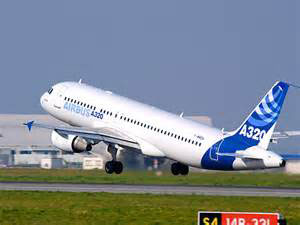
AUDIO: The 1980’s saw a veritable explosion of digital signal processing, control and automation software for consoles, and almost everything else (including concert lighting systems for example). The huge differential is that despite the heavily documented poor performance of many of these early systems, lives were not on the line, yet.
2000s to the Present Day
AIRCRAFT: A veritable tsunami of high-advanced controllers in a box, automated flight control systems and developments in composite materials, lightweight construction, massive engine performance improvements and new satellite-based, highly-complex flight management/aerodynamics systems including auto-land, auto-route and similar options produced three major changes. First, crew sized dropped from the average of three or four to just two. Second, much longer range capability (8,000+ miles) became almost a de-facto standard (14-16+ hour flight times — or as crews call them, four-movie, six-meal trips). And finally, those ultra-long-range flights were now being made with two-engine, wide-body aircraft (Boeing 767, 777, 787 and Airbus A330, A350). Although both the 747 (four engines) and the Airbus A340/380 remained or entered service, the gigantic cost savings produced by the two-engine, long range, two-crew configuration became the dominant factor driving the industry. (For a list of the 20 longest currently operating flights and the aircraft used, go here.)
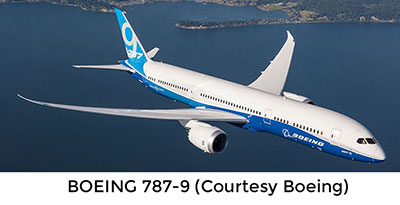
AUDIO: Into the box we go. All digital systems, fiber optic networks and snakes, Pro-Tools and its numerous DAW competitors, 19″ rackmount outboard gear become software plug-ins with astonishing accuracy. Extremely accurate modeling techniques making the software virtually indistinguishable from the original hardware. Sophisticated, smart algorithm-based auto-mix and auto-sub mix capabilities make corporate events a one-man gig. Both live sound and recording see channel counts rise dramatically in console systems because of software controlled routing and configuration options (100+ channels is now a standard configuration in a console only 68 inches wide).
An example of this configuration is shown below:
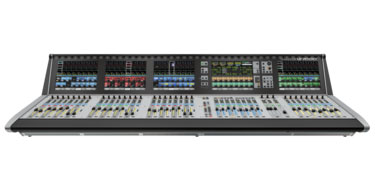
Digitally beam-steered loudspeaker systems arrive, mirroring the arrival of satellite-based automated steering and navigation in aviation. Super compact, high-power line-arrays and column arrays with on-board digital amplification and complex software make sound reinforcement possible in spaces once deemed a lost cause — just as super long range aircraft made trips like Dallas to Abu Dhabi, United Arab Emirates, feasible (14+ hours, 8,000+ miles).
As we enter the second decade of the 21st century, we have come a long way from the simple tube radios and mechanical servos of nearly a century ago. But what hasn’t and shouldn’t change is the need for human controls and skill in operating these evermore sophisticated systems. Whether it be aircraft that can operate autonomously from take-off to landing over 14+ hours and 8,000+ miles, or massive, fully-networked multi-kilowatt stadium audio systems, the need for a human in the loop has never been more important.
No matter how many lines of code may be written, or how much modeling may be done for audio systems, reality will always produce the unexpected. It is for that reason that the absolute ability of a live person to take control of any system remains essential!
PS: Just when all the pundits had once again predicated the total demise of analog audio, it is fascinating to note that Sony is now installing four brand new VINYL cutting lathes in Tokyo to make 12 “LPs again, and the return of many of the most cherished analog signal processors is in full swing. Humans and analog are still important — and always will be.





